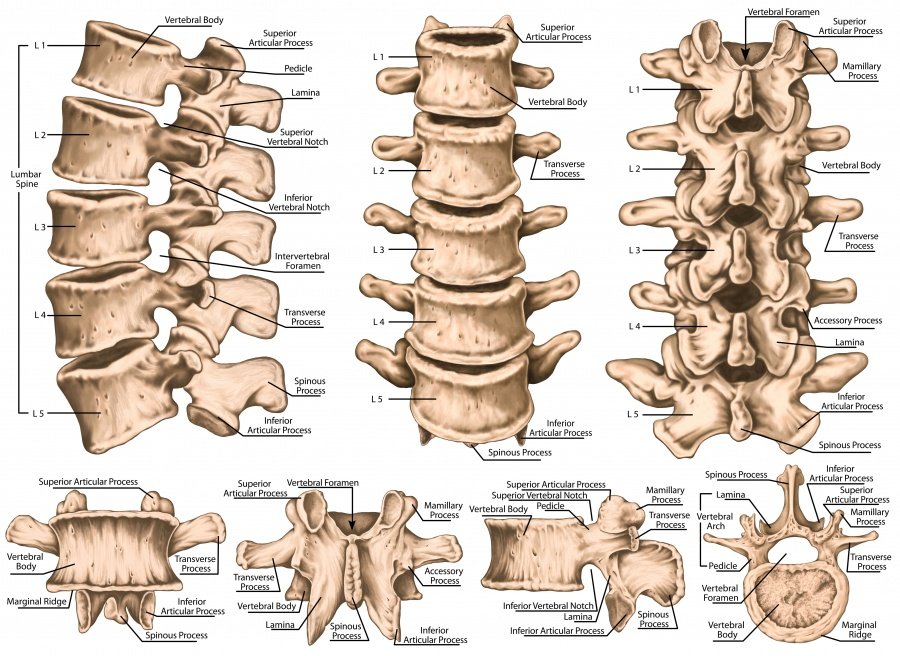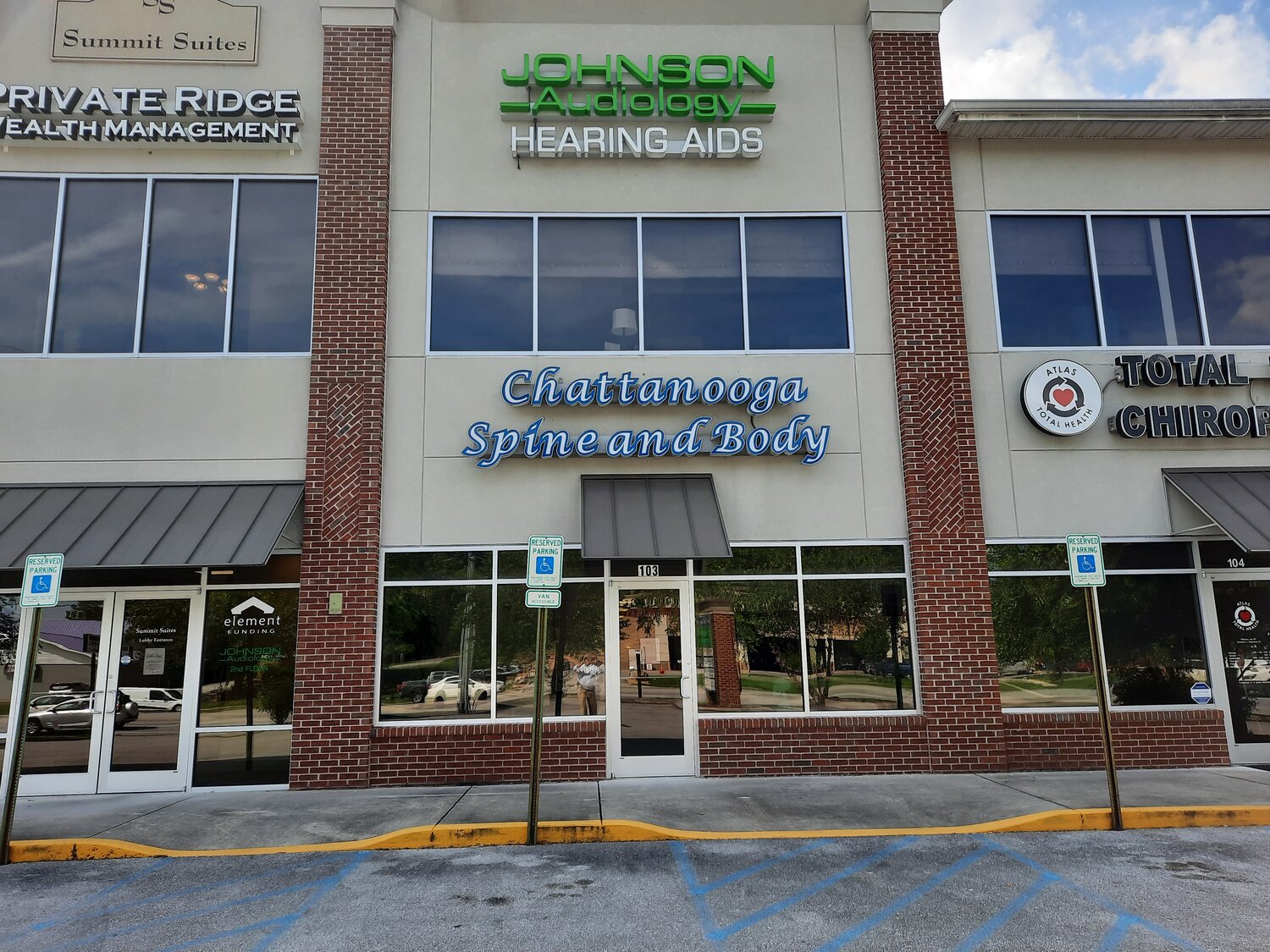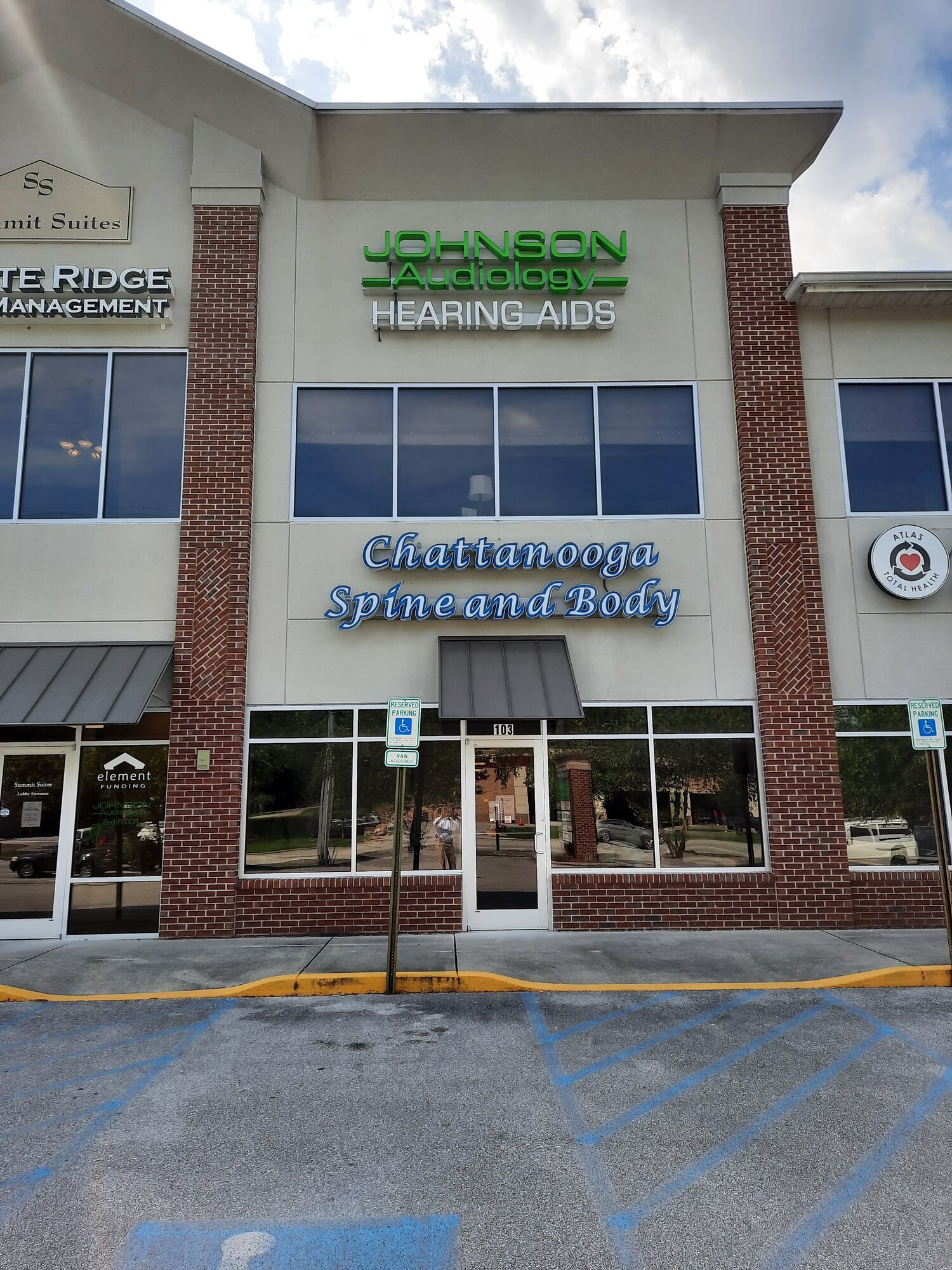
Lumbar Spine (Low Back)
Problems in the lumbar spine will often not be noticed until they begin causing back pain. About 80% of people will develop back pain in their lifetime. Problems in the lumbar spine may be caused by injury, repetitive use, infection, malignancy, or degenerative changes.
Conditions in the lumbar spine can develop for many different reasons. The vertebral bodies, facets, pedicles, and discs in the lumbar spine can all develop problems over the course of a lifetime. Injuries, aging, genetics, activities, lifestyle, nutrition, and infections can all have an impact of the low back. Some things we can control, and others are out of out control.
Physical exam for the back will include looking at the soft tissues structures of the low back, such as the muscles, tendons, and ligaments. Strength, reflex, and sensory testing in the arms helps to evaluate the various types of nerves that originate in the lumbar spine and control the muscles and sensations in the legs. The physical exam process is an important step in identifying and diagnosing problems.
Various types of techniques can be used to help to see the anatomy and structures in the lumbar spine to help identify and diagnose problems. X-rays and CT scans are well suited to see dense structures, such as the bones. Imaging studies, such as MRI’s, are better to visualize soft tissue structures, such as muscles, ligaments, tendons, the spinal cord, and nerves. MRI’s are also good at visualizing liquid water, which may represent things such the spinal fluid around the spinal cord or inflammation inside soft or hard tissue structures.
Treatment for low back conditions can vary greatly. Conservative treatments may include things like physical therapy, medications, stretching, and exercises. More aggressive treatments may include injections, procedures, and surgery. As a non-surgical practice, surgery is considered to be a “last option” for treating lumbar spine conditions.
It is important to note that degenerative changes in the lumbar spine are part of the aging process. With age, the discs in the spine lose water content and will begin to lose height and compress to various degrees as a result of this process. Because there are very few pain nerves in discs, a degenerative disc is not nearly as painful as most people think. It is usually other structures in the spine that have more pain nerves, such as the muscles, tendons, ligaments, and facet joints, that will cause much of the low back pain that many people note when they develop “back problems”.

